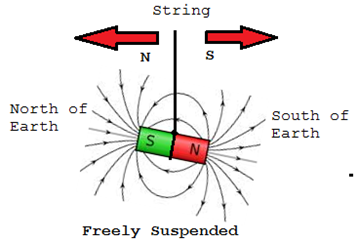
Magnets and their properties have long fascinated scientists and captured our imagination. These remarkable objects have the natural ability to attract certain materials and influence the world around them. The core of a magnet's power lies in its magnetic field, an invisible force that permeates its surroundings. Magnets can be divided into two main types: permanent magnets, which retain their magnetism over time, and electromagnets, which create a magnetic field when an electrical current flows through them. The properties of magnets include the ability to attract or repel other magnets, align with the Earth's magnetic field, induce electrical currents, and store information in magnetic storage devices. Understanding these properties opens up countless applications, from everyday objects like refrigerator magnets to complex systems like magnetic levitation trains and medical imaging technology.
A magnet is nothing more than the part of a solid body that has the property of attracting iron and some other metallic objects. The points where most iron particles accumulate are called the magnet's poles, while the linear change in the integrity of these poles is called the magnet's axis.
i) When such a magnet is twisted into pieces of iron, it is found that the pieces of iron stick to it as shown in the figure. The outermost pieces of iron accumulate at both ends of the magnet, while only a few reach the center of the magnet.
iii) Once a magnet is positioned close to an associated piece of iron or steel, its magnetic property is transferred to the piece of iron or steel. Such transfer of attractive property can also be achieved by rubbing the pole of the magnet on the associated iron or steel piece. Such properties are called magnetically inductive.

Main types of magnets
- Permanent magnets: Permanent magnets retain their magnetism even without energy input from an external source. They are typically made of iron, nickel, cobalt or certain alloys such as neodymium, iron, boron (NdFeB) or samarium-cobalt (SmCo). These magnets are used in a variety of applications, including electric motors, generators, speakers, magnetic separators, and refrigerator magnets. They produce a stable magnetic field and are known for their reliable and long-lasting performance.
- Electromagnets: Electromagnets are created by passing an electric current through a coil of wire, creating a magnetic field. By adjusting the current flow, the strength of the magnetic field can be controlled, making electromagnets very versatile. They are used in diverse applications such as electrical relays, MRI machines, particle accelerators, magnetic levitation trains, and speakers. Unlike permanent magnets, the magnetism of electromagnets can be turned on or off by controlling the electrical current.
- Temporary Magnets: Temporary magnets exhibit magnetic properties when placed in a magnetic field, but lose their magnetism when the area is removed. Examples of quick attractions include iron nails or paper clips, which become magnetized when placed near a permanent magnet. Temporary magnets are used in diverse applications such as magnetic experiments, magnetic compasses, and temporary storage of magnetic information.
Understanding the properties and applications of these main types of magnets is fundamental to the development and use of magnetic systems for various industrial, commercial and scientific purposes.
Relationship between torque and power
The relationship between torque and power is fundamental in mechanical engineering and physics. Torque refers to the rotational force exerted on an object, while control measures the speed at which work is done or energy is transferred. In the context of rotating machines, such as engines or machines, torque and power are related by the equation: Power (P) = Torque (T) × Angular Velocity (ω). Angular velocity represents the rotational speed of the object in radians per second.
Electromotive force and potential difference
Electromotive force (EMF) and potential difference are two important concepts in electrical circuits and electromagnetism. EMF refers to the energy per unit charge supplied by a source, such as a battery or generator, to produce an electrical current. It is measured in volts (V). On the other hand, the potential difference, also measured in volts, represents the difference in electrical potential between two points in a circuit. While the EMF provides the driving force for current flow, the potential difference determines how electrical charges move within the circuit. . The EMF initiates the flow of current while the potential difference determines its movement and distribution.
Conclusion
In summary, magnets and their properties are a fascinating topic that has contributed significantly to the advancement of several industries and technologies. From the reliability and longevity of permanent magnets to the versatility of electromagnets and the temporary magnetic behavior of certain objects, magnets play an important role in our daily lives. Whether in power generation, transportation systems, medical imaging or even simple household applications, magnets have proven to be invaluable tools. Exploring and exploiting the unique properties of magnets continues to drive innovation and improve our understanding of the fundamental forces that govern the universe. The deeper we delve into the world of magnets, the more opportunities arise for scientific discoveries and technological advances that will shape the future.

